Adam rides Zero’s new electric SR/S
2020 Zero SR/S review by Adam Child ‘Chad’ – Images by Milagro
Californian electric motorcycle manufacturer Zero have largely led the way in the electric motorcycle space since they launched their first fully electric production motorcycle back in 2010. Now on the back of the successful SR/F they’ve launched the sporty SR/S.
Zero does not currently have a presence in Australia but our UK based contributor recently sampled the new SR/S and we thought you might be interested in his thoughts.
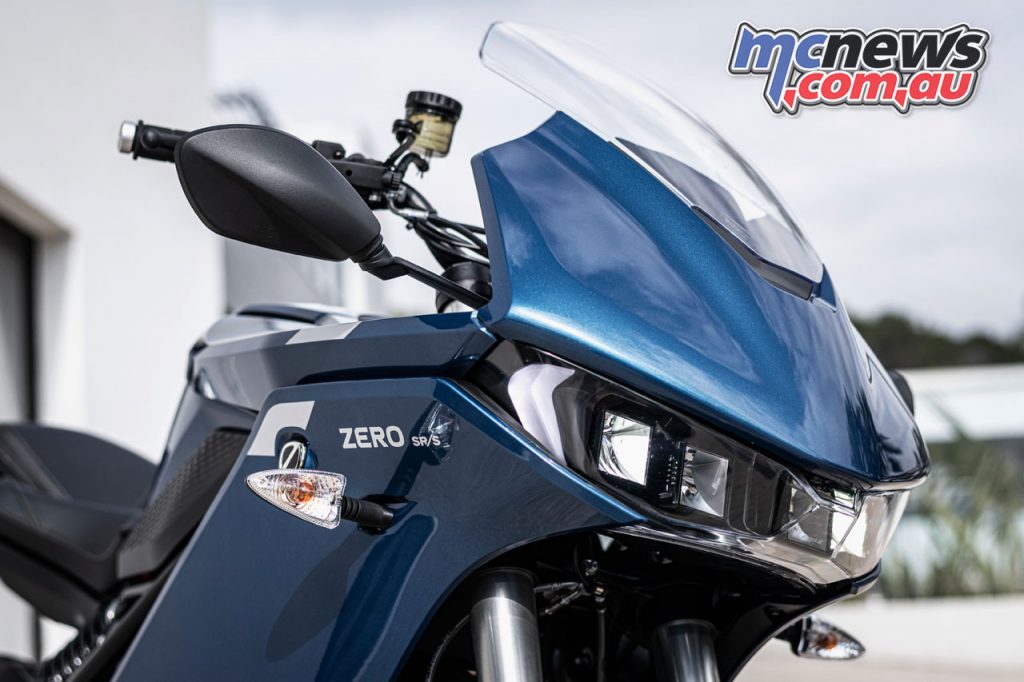
The £19,500 base model features new suspension and sleek bolt-free bodywork, helping improve range by up to 13 per cent compared to its naked counterpart, which the new model is heavily based upon. [Converted into Australian dollars,that translates into around 40k AUD, if you could buy it here…]
Yes, there’s virtually no noise, just the slight wine of the carbon belt drive on rapid acceleration, and the odd scrape from my knee slider as it touches the warm coastal road. I have no gears and no clutch to worry about, instant torque and multiple rider aids backing that up though does add some level of security.
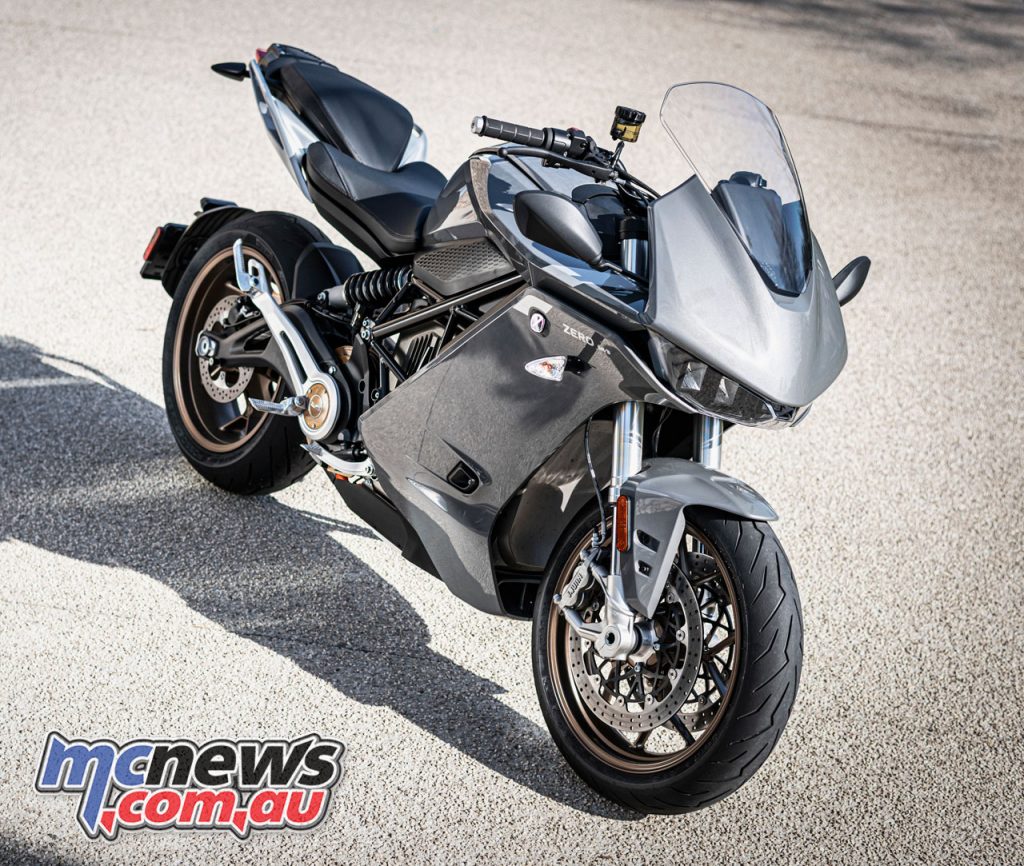
Would I swap for a conventional petrol bike? You know, I’m unsure, which might just be a first. There is no hiding the fact the ‘top-spec’ Zero SR/S is expensive at £19,590 for the base model or £21,590 for the premium model, which includes a six-kW rapid charger, heated grips, and aluminium bar ends.
But there are some long term monetary savings on purchasing an electric bike. This is the part where I wish I’d done A-level maths, not A-level drama.
There is virtually no maintenance as there aren’t any liquids aside from the brake fluid, [Zero do list a minor service-style check every six months, or 6500 km for SR models]. Even the carbon belt drive will only need an initial adjustment after the first few hundred kilometres, then it shouldn’t need looking at for another 32,000 kiloemtres. No conventional combustion engine means no filters or spark plugs. A petrol bike service can be between $300 and $800 per year, even more if you are talking exotics.
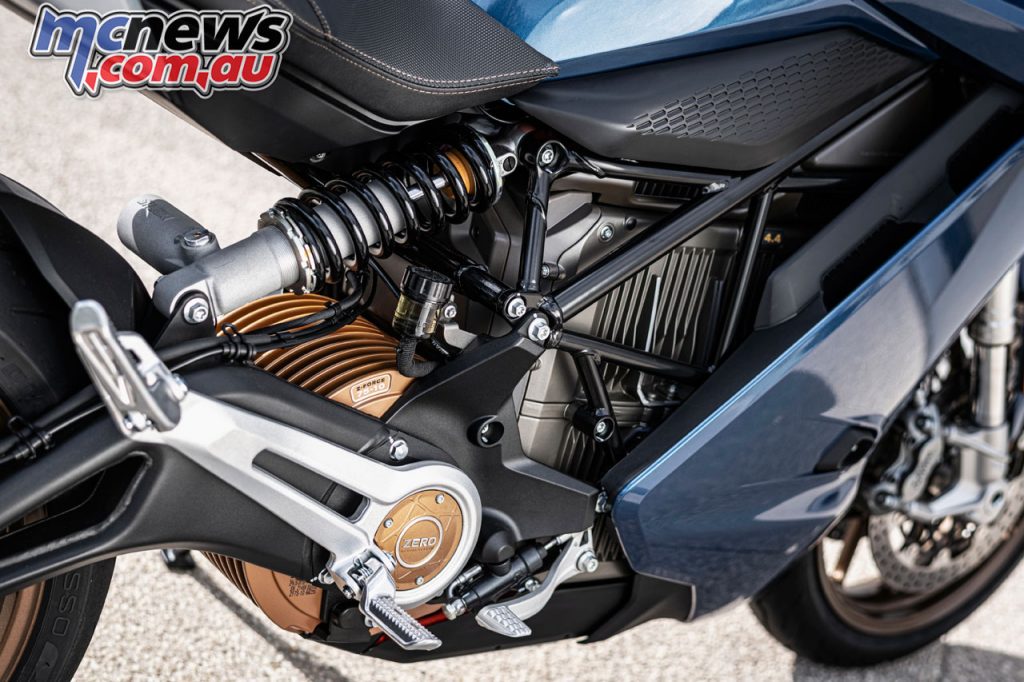
Obviously, the biggest saving will be fuel. This is where I attempt some very rough, estimated costs. To fully charge the 14.4KW battery at home, will cost approximately $6 AUD depending on state power costs. And for argument’s sake, let’s say a full charge will last 160 kilometres, so that’s around $4 per 100 kilometres.
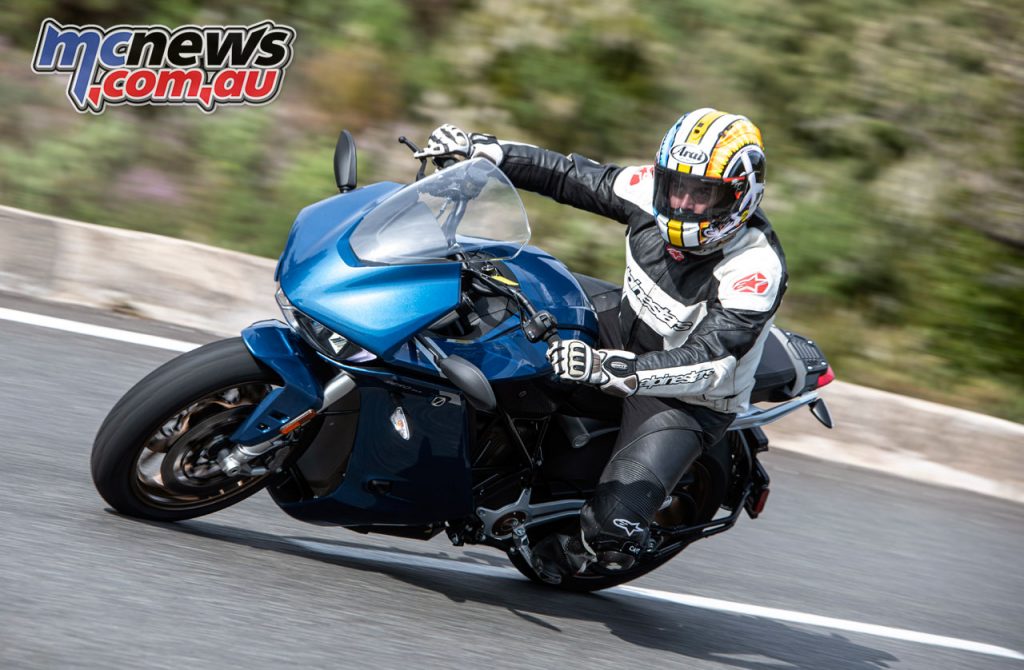
If you can charge for free at work it’s virtually free commuting. The only thing you’ll have to pay for is insurance and an occasional small service. The Zero SR/S could save a long range commuter quite a few bucks, but a small-mid capacity scooter would still probably work out just as cheap. But for the price of the Zero you could have that scooter, and perhaps a sportsbike and a dirtbike for the same money!
Range
Range is the big question. Interestingly, Zero are happy with their claimed range and have discovered through market research that the average rider will ride around 100 miles for a recreational ride, while the average commute is considerably less at around 20 miles.
Zero claims the new sculpted bodywork gives a 13 per cent increase in range, but this is only when prone or tucked in. So, yes, on the motorway, stay tucked in and you’ll enjoy 13 per cent more range – but would you?
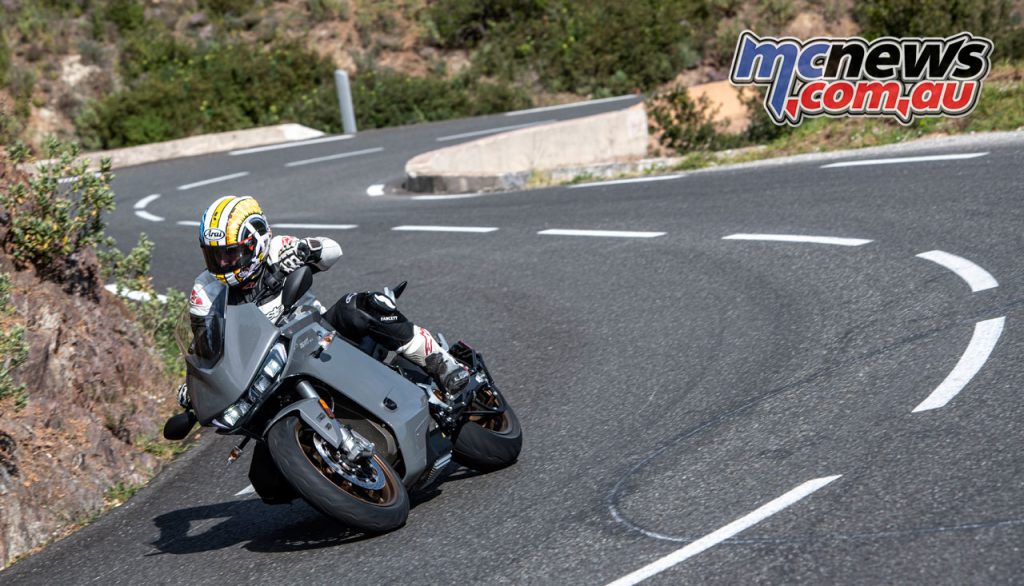
Zero also say that when riding normally the range is the same as the naked SR/F because the S’s bars are higher and the pegs are lower. In other words, the aerodynamic effects of the new fairing are only advantageous when laid on the dummy fuel tank.
At 110 km/h on the highway it is good for just over 130 kilometres, and a combination of city and highway returns a range of around 175 kilometres.
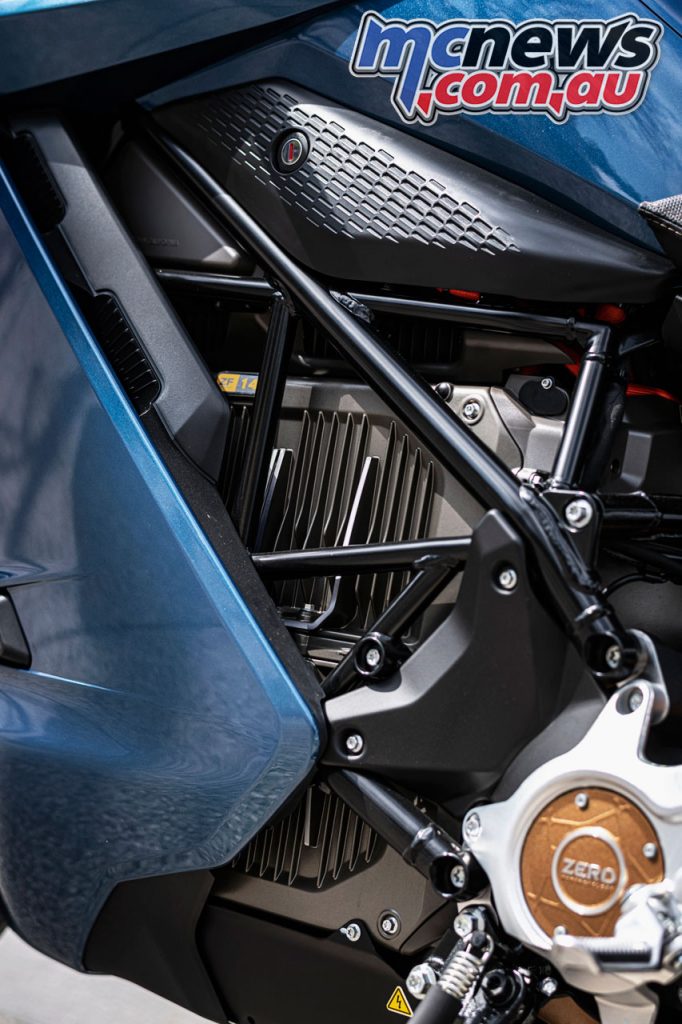
In the real world, range ultimately depends on how you ride, your size, weight, wind, hills… even tyre pressures. Some taller, heavy-handed riders had worse range figures than me, but during the test in the south of France, I calculated the following.
After a steady ride, with a very short blast on the motorway, I travelled 37 kilometres and used 20 per cent of the battery’s charge, and had an indicated range remaining of 138 kilometres. Further along, using eco and street modes, I had 70 kilometres done, 58 per cent battery remaining and an indicated 100km range remaining.
Finally, after a very brisk ride, motorway, plus more town work and 110 kilometres done, I had 26 per cent battery remaining and 46 km remaining. Roughly speaking that’s a 160 kilometre range, with the rider starting to think about re-charging after around 120 kilometres of ‘normal’ riding. However this could be less on faster roads.
When it comes to re-charging you have to think of the SR/S as a smart phone. You’re so dependent on your phone, you’d rarely allow it to run out of charge. I generally use mine throughout the day and, when I get home or when I got to bed, plug it in at about 20 per cent life – and it’s back to 100 per cent in the morning.
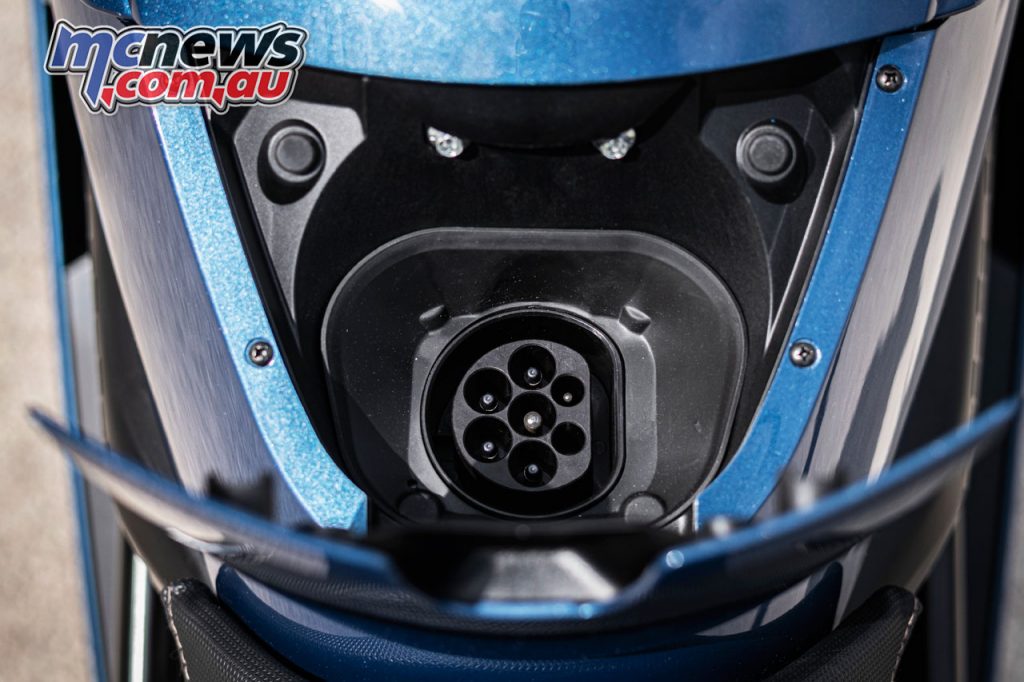
Alternatively, I plug in at my desk in the office and have 100 per cent power for the rest of the day. It’s the same for the SR/S electric bike: get to work, plug in, and have full charge during the working day. A normal 3 kW fast charger will have the SR/S back to full power in 4.5 hours on the standard bike, and just 2.5 hours on the premium model.
However, as you should have 15-25 per cent battery left, you’re looking at considerably less time, say four hours for a 95 per cent charge from flat, two hours on the premium. On a fast charger it will take 1.3 hours for a 95 per cent charge and just an hour on the premium model.
It’s worth noting the last five per cent of charge takes the longest, around 30-minutes as the bike is optimising the battery. Therefore 30-minutes on a fast charge could see a percentage rise from 30 to 90 per cent, barely enough time to order a coffee and drink it.
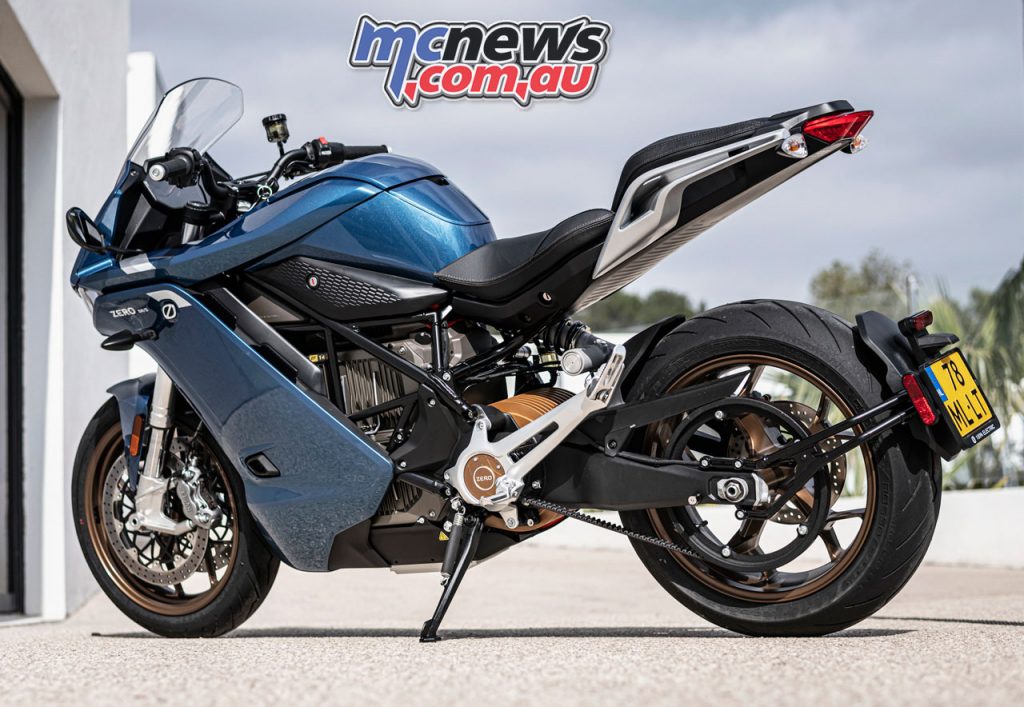
As electric bike and cars develop, charging stations will become more popular and there are numerous apps on the market that highlight where they are. In fact, in some regions of the world you can even pre-book a charging point in advance .
Electric power and torque
If you’ve never ridden an electric bike before, you’re in for an enjoyable surprise. Torque is instant; in fact, on the dyno the SR/S makes peak torque from less than 500 rpm, then it’s a flat curve of 190 Nm until it eventually tails off. No gears and no clutch mean it’s easy to launch from a standstill too. At the traffic lights GP it will give most conventional petrol bikes a run for their money in a race to the national speed limit.
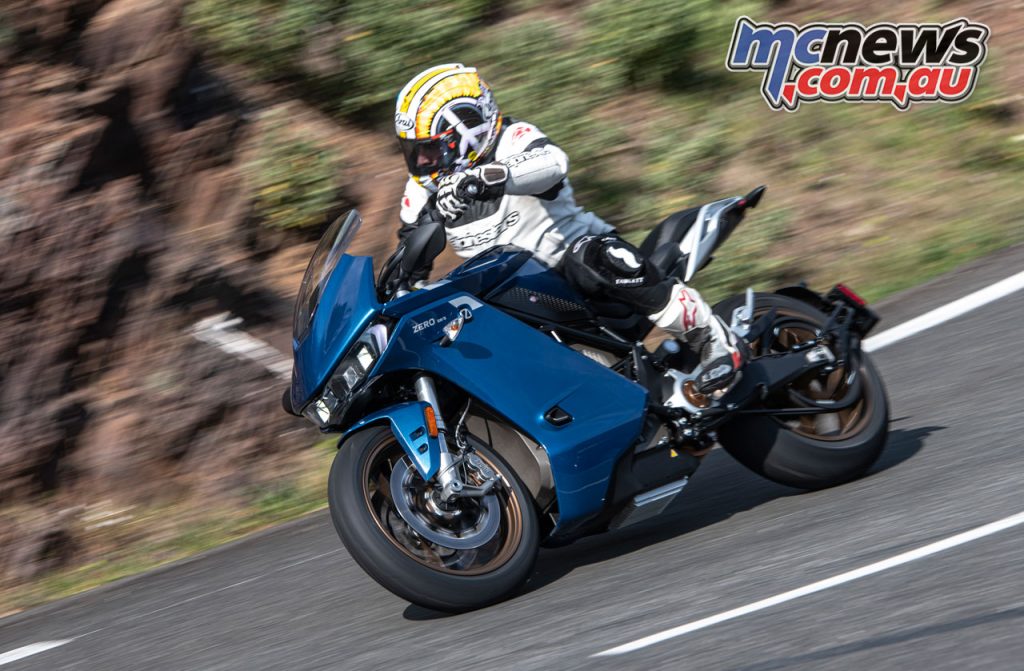
There are four main ride modes to choose from: Eco, Rain, Street, and Sport. Each mode changes the power characteristics along with peak torque. They also change the level of traction control intervention and re-gen braking (which is like conventional engine braking but also re-charges the battery).
The modes can be switched on the move, and there are additional custom modes in which you can dictate the bike’s performance – for example full power, no TC and no engine braking for track action. Each mode illuminates the full colour TFT dash to a different colour and it’s simple and straightforward.
If you download the app you can even change the modes remotely from your phone. For example, if you’ve stopped for a coffee and have your bike on charge and it starts to rain you can switch from sports to rain – all from the warmth of the coffee shop.
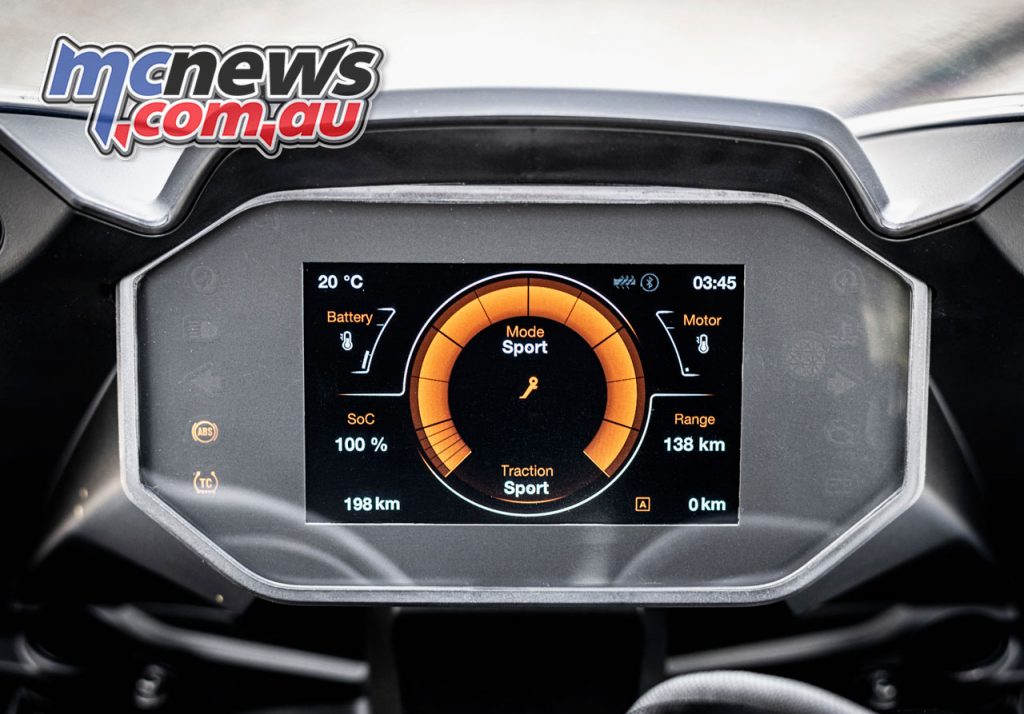
Unlike some petrol bikes, the modes do dramatically change the power and feel of the bike. In Eco mode the power is soft, top speed is limited to 120 km/h, and there is plenty of engine braking, or re-gen – so much so you only need the occasional brush of the brakes, even when you’re making steady progress.
Around town or on the slow coastal roads of southern France the Eco mode was more than enough, and I’m guessing in any major city you wouldn’t want any more. If I were comparing its output to a petrol bike, I would think of KTM Duke 390 to 120 km/h.
There is a noticeable step up on power from Eco and Rain to Street. Now the Zero is more comparable to a Suzuki SV650 or Kawasaki Z650. Overtakes don’t have to be as calculated, top speed isn’t restricted and the reduced engine braking is instantly noticeable. Again, on the twisty roads in the south of France, I was more than satisfied with the street mode.
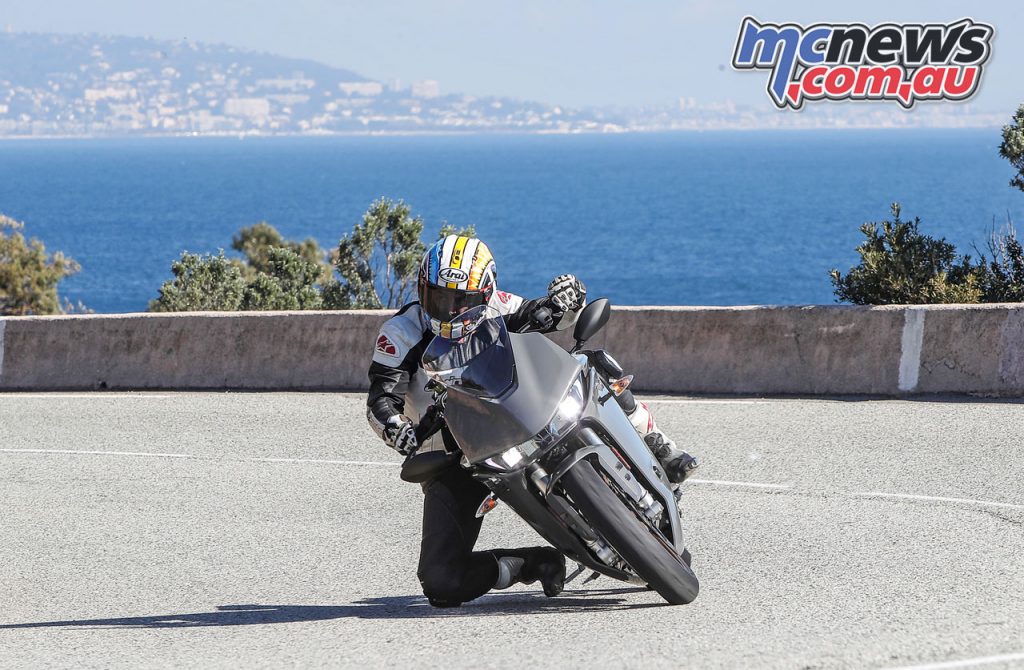
Even when we hit the mountain passes, I didn’t want any more power and I was able to have a spirited, enjoyable ride. The Street mode should be fine for 80 per cent of the time away from fast A-roads or the motorway.
However, flick into the full sports mode and the SR/S comes alive; acceleration no matter what the road speed is rapid. There is no lag, no hesitation, you’re instantly propelled towards the horizon. On the motorway I was blown away by the rapid roll-on acceleration from 100 km/h to 130 km/h, which took me by surprise.
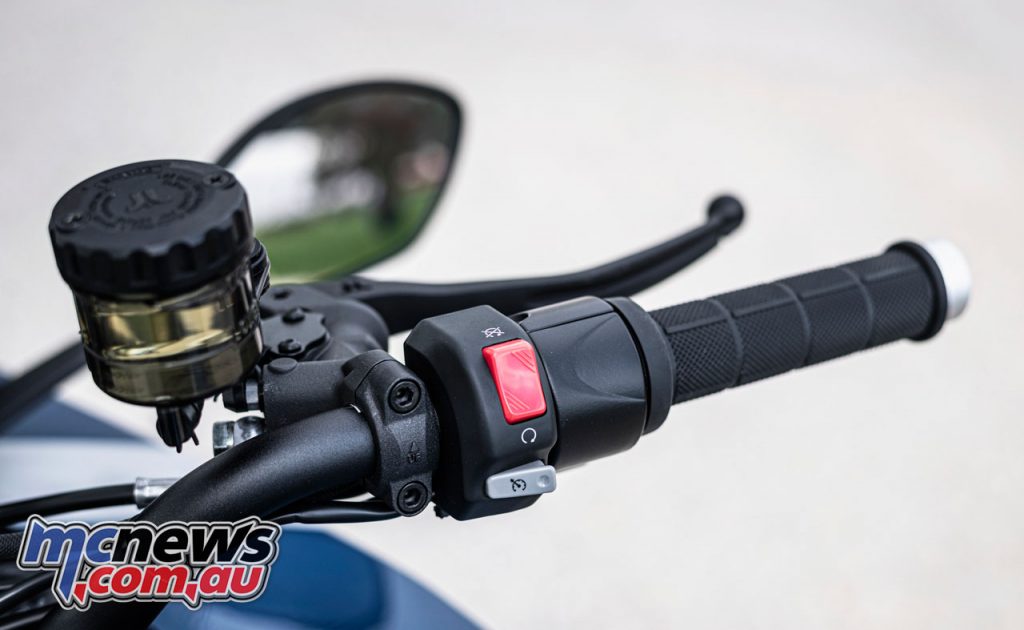
Unlike a petrol bike you don’t have to kick back a few gears for instant power, instead it’s always there, and hugely impressive. In this mode it’s hard to compare to a petrol bike as top speed is claimed as only 200 km/h, but that acceleration – the way it feels when you roll on the throttle – is like a big sports naked, a Z1000 perhaps. The only downside of the sports mode is that it quickly zaps power from the battery, greatly reducing the range.
Electric advantages
No noise means you can leave the house for an early morning ride without waking the neighbours. It also allows you to get more tuned in with your ride. It’s a surreal experience at first, but one I’ve grown to enjoy.
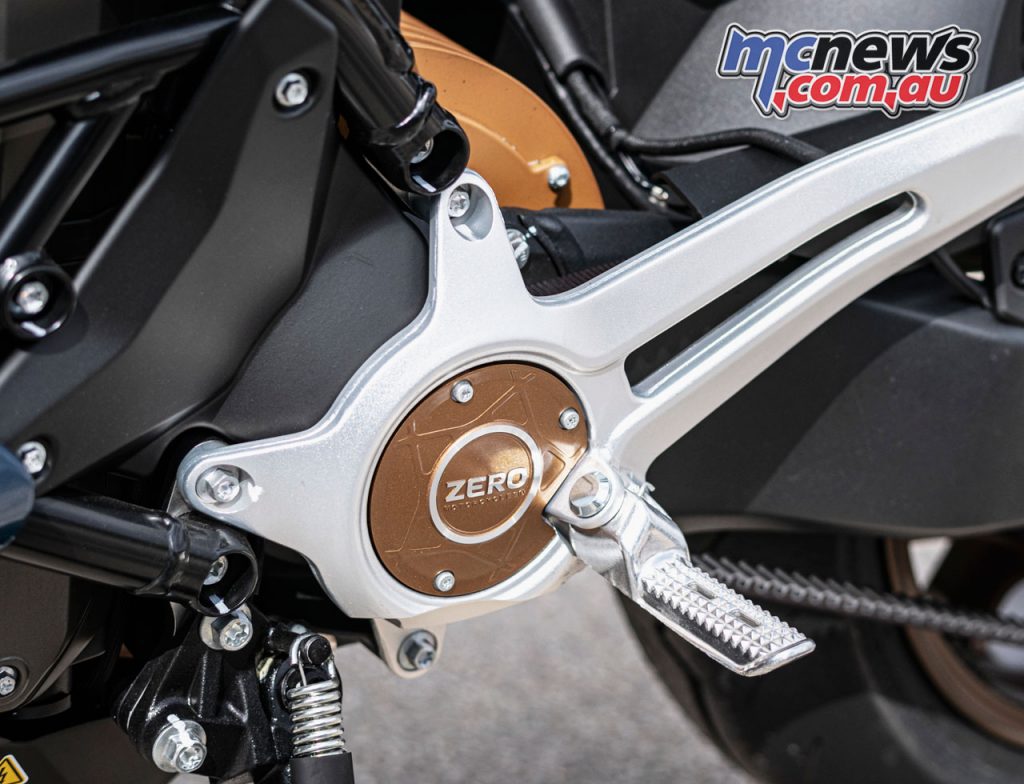
The lack of gears and gearbox makes it a doddle to ride, and because there’s no engine or exhaust, there’s no heat either. This has two advantages: one, you don’t get cooked in traffic from the heat generated by a petrol engine on summer days. And two, you can put a ‘hot’ bike straight into the garage without having to worry about the kids being in the garage at the same time.
Handling suspension, chassis, and weight
Weight has always been an issue with electric bikes. I raced in the TT Zero race on the Isle of Man several times and it was always an issue on a 260 kg bike, but although the Zero SR/S is hefty, it’s not too bad, and more comparable to a large sporty, fully-fuelled naked bike.
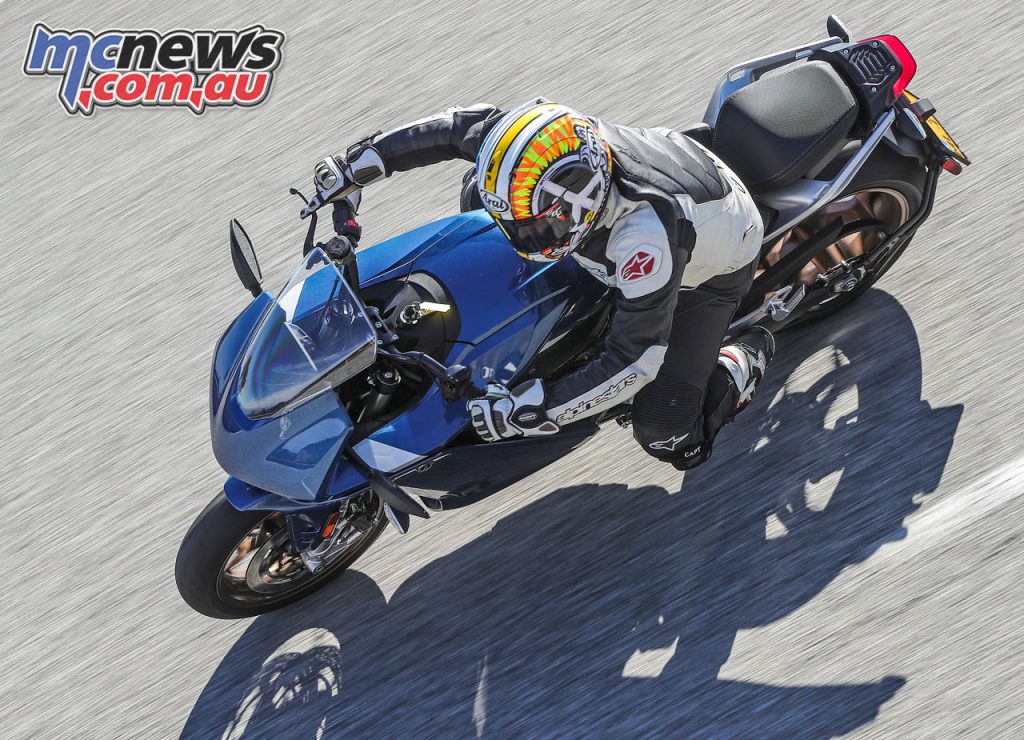
229 kg isn’t light but is more than manageable, and Zero has made significant changes to aid the handling with this new model. The fully-adjustable Showa suspension looks visually identical to that on the naked F model but is completely new internally, with new springs and a revised shim stack.
The ride is on the sporty side; there isn’t a huge amount of travel on the suspension, which results in a firm ride. This is fine for smooth French roads but I’d prefer it to be plusher, especially on bumpy B-roads. However, the flip side is the way it controls the weight of the bike, particularly in fast corners and when you apply the strong brakes.
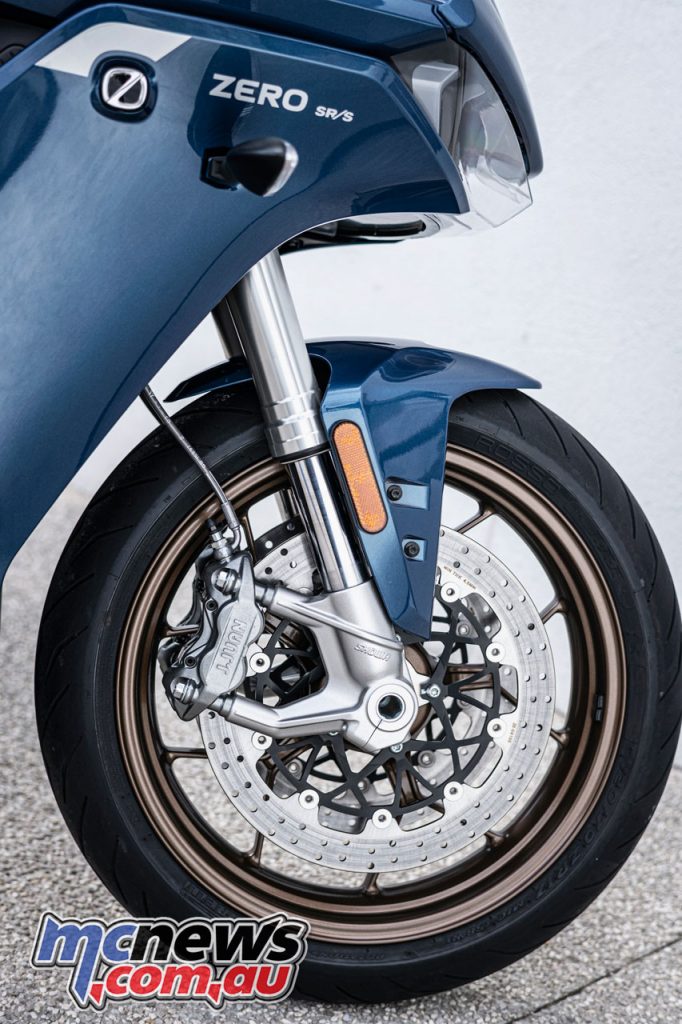
However, you do notice the weight during fast direction changes, especially lifting the bike from knee-down left to knee-down right, but it’s not overwhelming. The bars are relatively wide and high and the pegs are low, which allows you to manhandle the bike with relative ease.
Ground clearance is also good for this type of bike while the Pirelli tyres give excellent feedback. So think sports-touring rather than full-on touring – like a Ninja 1000SX or Suzuki GSX-S1000, and the Zero SR/S wouldn’t feel too far out of place in the medium group on a track day.
Comfort over distance and touring
As mentioned, the overall ride is on the firm side, and some of this is down to the seat, which is more sports-bike than touring. The new screen and bodywork do a decent job of keeping you out of the wind blast, while pillions now get good side grab handles and pegs that are not too high.
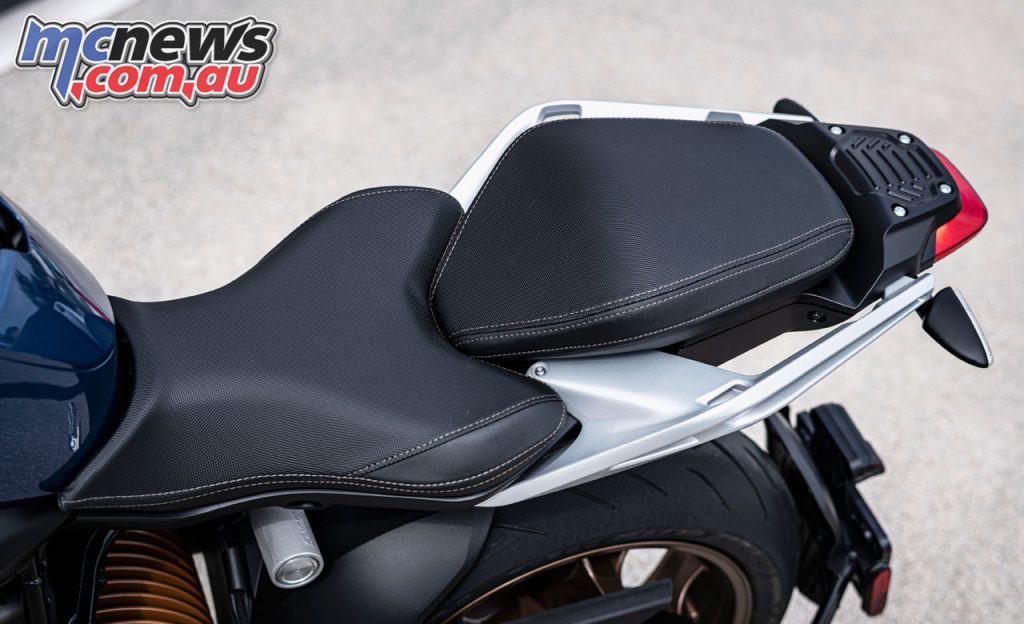
In the accessories catalogue there are even solid panniers and a top box on offer. Don’t forget, there is also storage in the dummy fuel tank, enough for the charging cable, waterproofs or spare gloves. There is even a handy USB charger.
However, unlike a petrol bike, comfort isn’t an issue as you’re going to have to stop every 100 kilometres or so to re-charge, and that will take time, enough time to relax and chill out. This isn’t a bike you’re going to be able to cover 500 kilometres in a day on, at least not without careful planning.
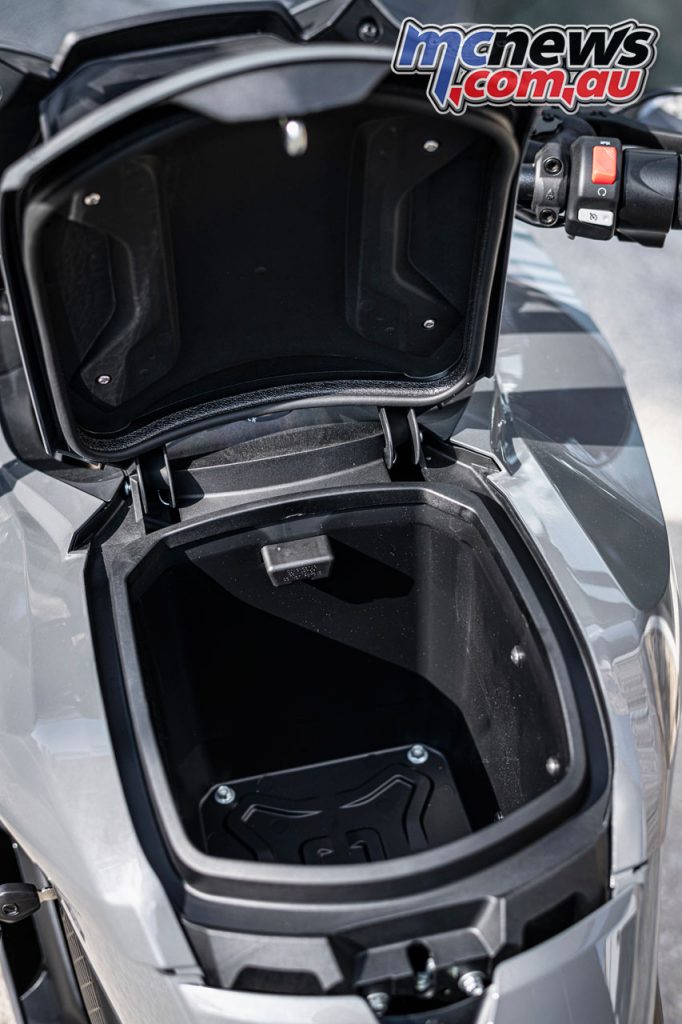
Rider aids and extra equipment/accessories
All the rider aids are lean-sensitive, which means cornering ABS and traction control comes as standard. These can be changed on the move or deactivated either via custom modes or remotely via your mobile phone.

The TC intervention doesn’t cut the ignition as it would on a conventional bike, it simply reduces the power/torque. In Rain and Eco mode you can feel the intervention, but not so much in the street and race mode.
In many ways the TC is more beneficial on an electric bike as there is so much instant torque from less than 500 rpm and a direct connection from throttle to tyre. On a cold day, it would be easy to spin the rear tyre. In the wet, I’d strongly advise keeping the TC active.
2020 Zero SR/S verdict
Yes, it’s expensive, compared to a normal petrol bike, but after the initial outlay, running costs are significantly reduced.. The Zero SR/S is hard to fault. If you can live with a 160 kilometre range, use a bike mainly for commuting and short journeys, then it is a serious contender. Why would you not try electric? Apart from the current price of admission that is, and the fact you can’t buy a Zero in Australia yet!
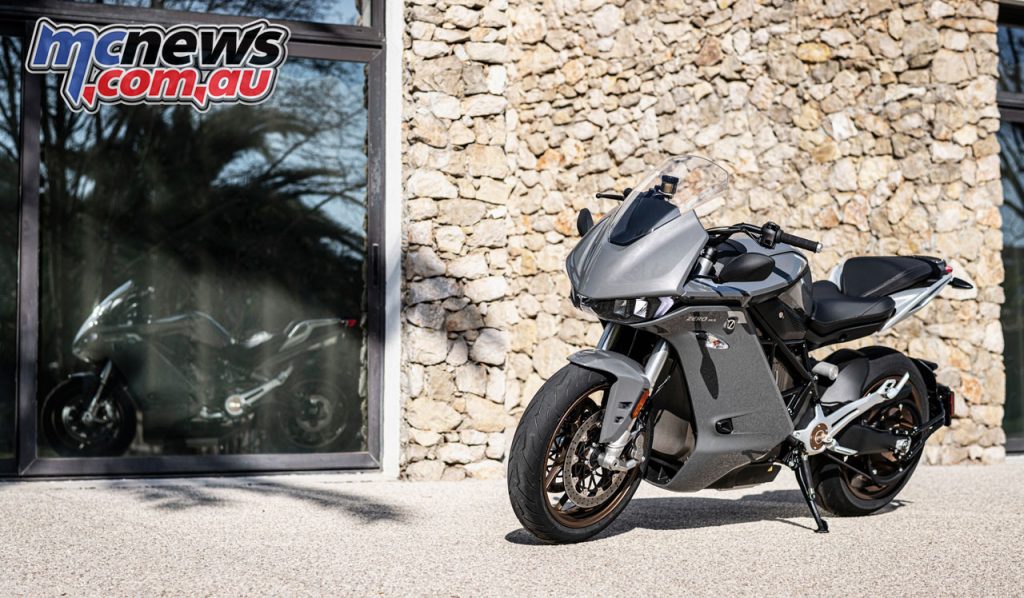
It will be interesting to see how the bikes perform in the real world on faster roads away from the glamour of Cannes. A decade ago I would have laughed at the idea of an electric bike, but not now. We quizzed Zero on their Australian plans and received the response below.
Dan Quick, Manager of Marketing communication
“We’re excited to hear there is interest in the Australian market for Zero Motorcycles but don’t currently have plans to return to retail operations there a this time. We’re constantly reviewing inbound requests for expansion into new markets, and when we receive them there are three general criteria we consider. First is the market opportunity and what type of demand we see in the potential territory. Second is the government policy on EV’s and any available incentives. And third is the charging infrastructure; its maturity, technology, and density. Lastly, we need to have the right, long term committed distribution partner to ensure that our consumers there get the level of support and service that we want to see as a leading brand. All of these factors along with the logistical challenges of being able to support future customers at a level befitting our premium standards go into consideration of an expansion.”
2020 Zero SR/S Specifications | |
| Price (UK) | From £19,590 (£21,590 Premium as tested) |
| Capacity | None |
| Bore x Stroke | Er? |
| Engine layout | Rectangle battery cells, inline with air-cooling |
| Engine details | Interior permanent magnet AC motor |
| Power | 110 hp (82 KW) @ 5000rpm |
| Torque | 140 lb-ft (190 Nm) from less than 500 rpm |
| Top speed | 124 mph (not recorded) |
| Transmission | Automatic – Belt Drive |
| Fuel cons. ‘equivalent’ | 59 mpg claimed |
| Tank size (Battery) | 14.4 kWh |
| Charging time | 4.5 hours (standard), 2.5 hours (Premium with fast charger) |
| Max range (theoretical) | 161 miles; city (259 km) |
| 109 miles; motorway @ 70 mph (175 km @ 112 km/h) | |
| Tested: 110 miles combined best (177 km) | |
| Tested: 99 miles combined worst (159 km) | |
| Rider aids | Lean sensitive ABS, standard traction control |
| Frame | Steel Trellis |
| Front suspension | 43mm Showa, Fully-adjustable |
| Rear suspension | Single Showa, Fully-adjustable |
| Front brake | Dual 320mm disc, J-Juan radially-mounted four-piston calipers |
| Rear brake | 240mm disc, J-Juan single piston caliper |
| Front tyre | 120/70-17 Pirelli Diablo Rosso 3 |
| Rear tyre | 180/55 -17 Pirelli Diablo Rosso 3 |
| Rake/Trail | 24.5°/94mm |
| Wheelbase | 1450mm |
| Ground clearance | n/a |
| Seat height | 787mm |
| Kerb weight | 229kg, 234kg premium |
| Warranty | Unlimited miles / 2-years and 5-years on the battery |
| Website | www.zeromotorcycles.com |













































